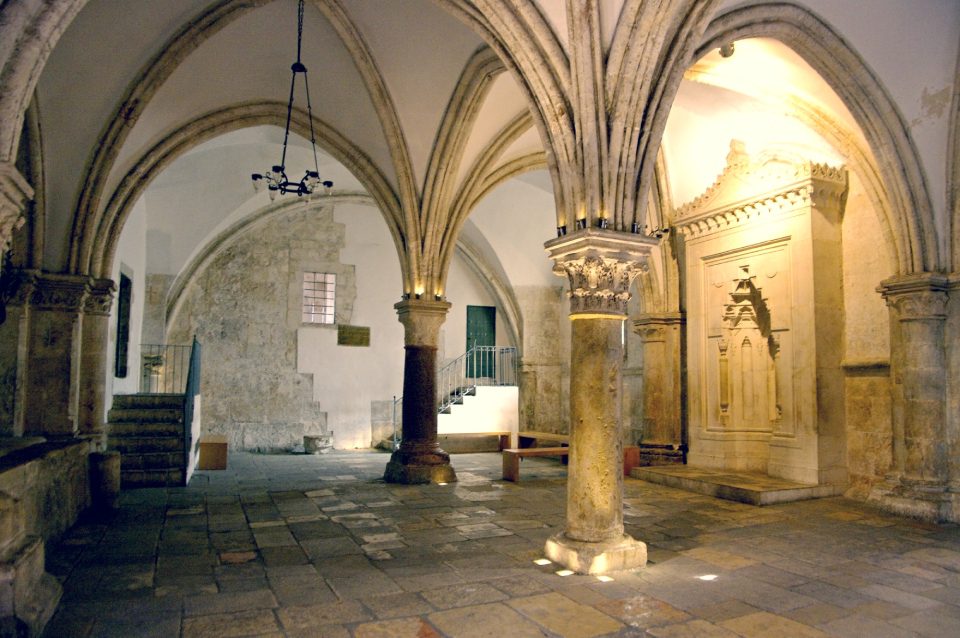The Last Supper is the final meal that; in the Gospel accounts; Jesus shared with his apostles in Jerusalem before his crucifixion. The Last Supper provides the scriptural basis for the Eucharist; also known as “Holy Communion” or “The Lord’s Supper”.
The First Epistle to the Corinthians contains the earliest known mention of the Last Supper. The four canonical gospels all state that the Last Supper took place towards the end of the week. After Jesus’s triumphal entry into Jerusalem and that Jesus and his apostles shared a meal shortly before Jesus was crucified at the end of that week. During the meal, Jesus predicts his betrayal by one of the apostles present and foretells that before the next morning, Peter will thrice deny knowing him.
The three Synoptic Gospels and the First Epistle to the Corinthians include the account of the institution of the Eucharist in which Jesus takes bread; breaks it and gives it to others; saying “This is my body given to you” The Gospel of John does not include this episode, but tells of Jesus washing the feet of the apostles; giving the new commandment “to love one another as I have loved you”. And has a detailed farewell discourse by Jesus, calling the apostles who follow his teachings “friends and not servants”; as he prepares them for his departure.
Last Supper: Background and Setting
The overall narrative that is shared in all Gospel accounts that leads to the Last Supper is that after the Triumphal entry into Jerusalem early in the week; and encounters with various people and the Jewish elders; Jesus and his disciples share a meal towards the end of the week. After the meal; Jesus is betrayed; arrested, tried; and then crucified.
Key events in the meal are the preparation of the disciples for the departure of Jesus; the predictions about the impending betrayal of Jesus, and the foretelling of the upcoming denial of Jesus by Apostle Peter.
In Matthew 26:24–25, Mark 14:18–21, Luke 22:21–23, and John 13:21–30 during the meal; Jesus predicted that one of the apostles present would betray him. Jesus is described as reiterating; despite each apostle’s assertion that he would not betray Jesus, that the betrayer would be one of those who were present; and saying that there would be “woe to the man who betrays the Son of man! It would be better for him if he had not been born.”
The Last Supper: Dating
Historians estimate that the date of the crucifixion fell in the range CE 30–36. All four canonical Gospels describe Jesus having an evening meal with his disciples prior to dying on a Friday at or just before the time of Passover (annually on 15 Nisan, the official Jewish day beginning at sunset) and that his body was left in the tomb for the whole of the next day, which was a Shabbat (Saturday).
However, while the Synoptic Gospels present the Last Supper as a Passover meal; the Gospel of John makes no explicit mention that the Last Supper was a Passover meal and presents the official Jewish Passover feast as beginning in the evening a few hours after the death of Jesus. John thus implies that the Friday of the crucifixion was the day of preparation for the feast (14 Nisan), not the feast itself (15 Nisan).
Possible Locations of the Last Supper
According to later tradition, the Last Supper took place in what is today called The Room of the Last Supper on Mount Zion; just outside the walls of the Old City of Jerusalem, and is traditionally known as The Upper Room. This is based on the account in the Synoptic Gospels that states that Jesus had instructed two disciples (Luke 22:8 specifies that Jesus sent Peter and John) to go to “the city” to meet “a man carrying a jar of water”. Then who would lead them to a house; where they would find “a large upper room furnished and ready”. In this upper room they “prepare the Passover”.
Saint Mark’s Syrian Orthodox Church in Jerusalem
Saint Mark’s Syrian Orthodox Church in Jerusalem is another possible site for the room in which the Last Supper was held, and contains a Christian stone inscription testifying to early reverence for that spot. Certainly, the room they have is older than that of the current coenaculum (crusader – 12th century) and as the room is now underground the relative altitude is correct (the streets of 1st century Jerusalem were at least twelve feet (3.7 meters) lower than those of today. So any true building of that time would have even its upper story currently under the earth). They also have a revered Icon of the Virgin Mary; reputedly painted from life by St Luke.
On my Christian private tours of Jerusalem, I like to take my faithful guests to both sites. One is very traditional so we can’t skip that I guess. But the other in my humble opinion is more authentic. The distance is not great and walking from point to point is a matter of a few minutes. Another thing that I would like to mention is the fact that all four Gospels mention the Last Supper.
Usually, we know that the New Testament sometimes contains certain contradictions. Or better said different versions of the same event. Even sometimes one gospel mentions an event that is not even told in another gospel. In other words, the fact that the four gospels mention the event does raise the probability such an event historically happened.


